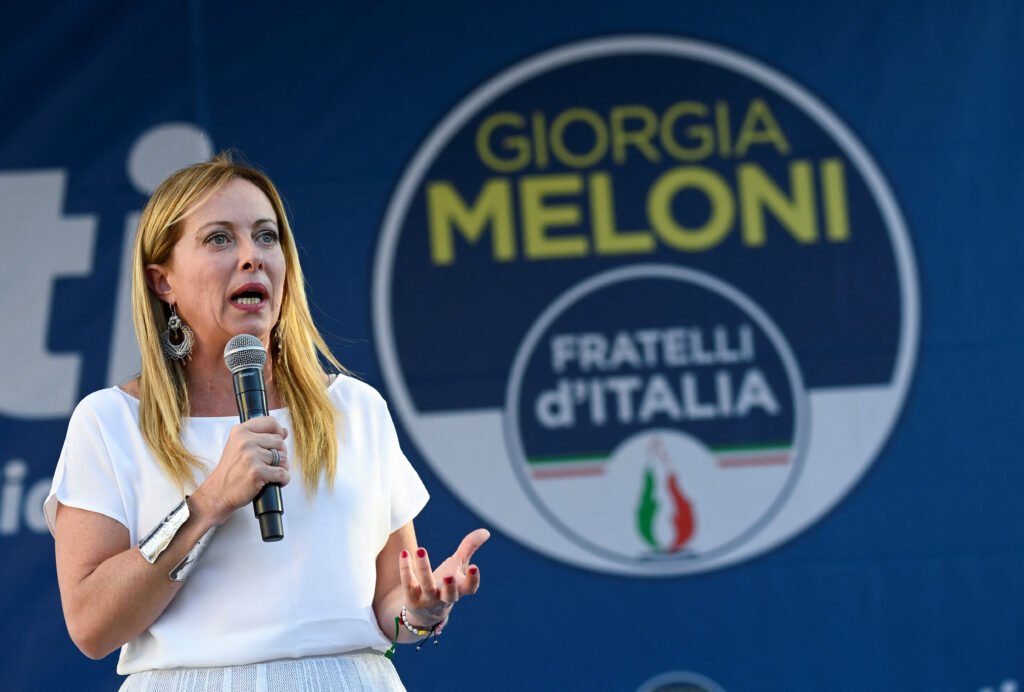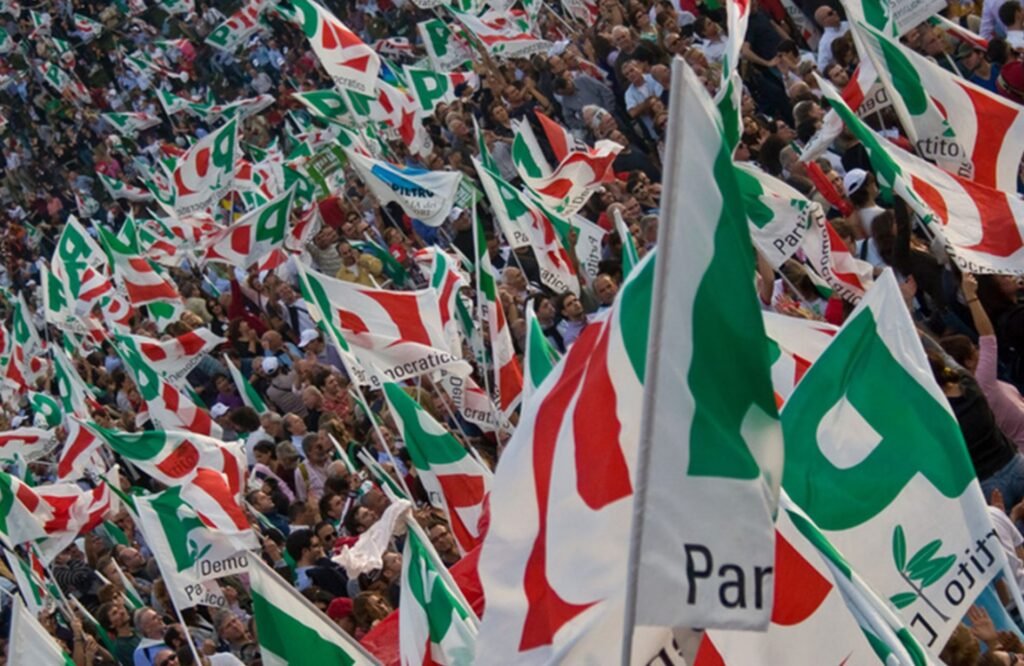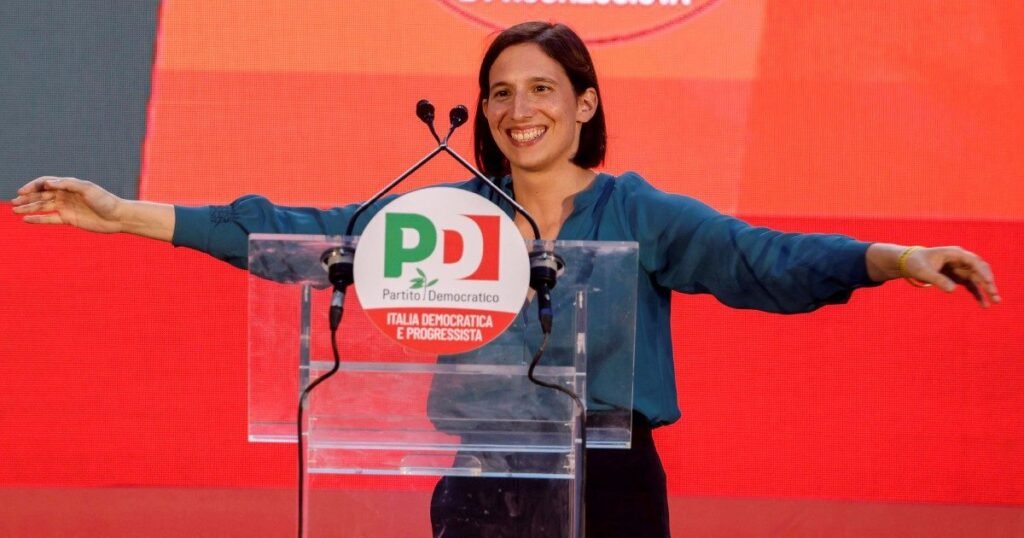As Europe approaches the June 2024 European Parliament elections, Italian Prime Minister Giorgia Meloni’s influence looms large over the continent’s conservative movement. Solidly positioned at home, Meloni, a figurehead for Europe’s far-right, has garnered significant attention as her popularity continues to rise. This ascendancy, however, is not solely due to her political prowess but also reflects the Italian center-left’s repeated missteps and inability to mount a coherent challenge.
Despite hopes that new Democratic Party (PD) leader Elly Schlein would offer a revitalized opposition, the Italian center-left finds itself in a weakened state. Schlein’s tenure has exposed deeper fractures within the PD, a party that has struggled to reconcile its foundational identity as a coalition of post-Communist and ex-Christian Democratic factions. The challenges the party faces are as much a product of its historical roots as they are of current political realities.

The Democratic Party’s Identity Crisis
The Democratic Party, established in 2007, was meant to unify Italy’s center-left under a new banner that could transcend traditional political ideologies. Formed by the merger of the Democrats of the Left, heirs to the Italian Communist Party, and Margherita, representing former Christian Democrats, the PD initially aimed to emulate the model of the U.S. Democratic Party. Under its first leader, Walter Veltroni, the party leaned toward a “Third Way” approach, following in the footsteps of figures like Bill Clinton and Tony Blair. However, this vision quickly unraveled as Italy’s economic conditions shifted, exposing the limitations of a neoliberal framework in a country where economic inequality was deepening.

Veltroni’s defeat by Silvio Berlusconi in 2008 highlighted the difficulty of consolidating the Italian center-left under a single banner. As economic hardships mounted, PD leaders turned toward austerity and technocratic governance, hoping to stabilize Italy’s position within the European Union. This trajectory only alienated the party’s traditional base, as successive leaders, including Pier Luigi Bersani and Matteo Renzi, embraced pro-business policies that further distanced the PD from its working-class roots. By aligning with technocrats like Mario Monti and, more recently, Mario Draghi, the PD has, at times, seemed more committed to serving EU and NATO interests than addressing the needs of Italian citizens.
Meloni’s Appeal Amidst a Divided Left
Meloni’s ascent to power has been facilitated by the center-left’s repeated strategic errors. Her Brothers of Italy party capitalized on disillusionment with the PD and the Five Star Movement, both of which have faltered in addressing Italy’s socioeconomic challenges. The center-left’s alliance with technocratic leaders has undermined public trust, allowing Meloni to portray herself as a defender of Italian sovereignty against what she frames as overreach by European institutions.
The PD’s reliance on figures with ties to neoliberal policies and austerity measures, combined with its complex history, has prevented it from fully resonating with the electorate. As a result, Meloni has successfully positioned herself as an alternative to the status quo, even as her policies remain aligned with conservative, pro-EU agendas.

Her skillful balancing act has made her a reliable partner for European conservatives while appealing to Italian voters frustrated with the political establishment.
The Struggle for Relevance
Under Schlein, the PD hoped to reconnect with Italy’s progressive base, but this effort has faced significant challenges. While Schlein represents a shift from the PD’s traditional leadership, her American political training and detachment from Italy’s Communist and Christian Democratic traditions have led to internal conflicts.The PD’s recent scandals involving alleged vote-buying and clientelism have only further complicated Schlein’s efforts to present a unified front.

These issues underscore the structural weaknesses within the PD and reflect a deeper challenge in appealing to a broad coalition of Italian voters. The Christian Democratic influence within the PD has created a culture of clientelism, rooted in Italy’s post-World War II political system, where public jobs and favors were used to secure loyalty. This dynamic has persisted, especially as the PD has struggled to redefine its role in the face of a weakened neoliberal agenda. Calls for the PD to abandon clientelism ignore the reality that this system has historically allowed the party to maintain its base, even as it faces diminishing returns in an era of growing voter disillusionment.
Reimagining Italy’s Left
For the PD to regain credibility, it must reassess its identity and reconnect with the electorate’s pressing concerns. Italy’s economic challenges demand a shift away from technocratic governance and toward policies that prioritize the working class and middle-income voters. Schlein’s leadership presents an opportunity to build alliances with grassroots movements, including those advocating for labor rights and social protections.
To move forward, the PD needs to break from its dependence on technocratic solutions and rediscover its commitment to social justice. This would entail a more assertive stance on issues like labor reform, housing, and social welfare — policies that resonate with a broader spectrum of Italians. While such a transformation would require the PD to navigate its complex history, embracing a more populist approach may offer the best chance of countering Meloni’s influence and reestablishing the center-left as a credible alternative.
A Fragmented Left in a Changing Europe
The PD’s struggle is not unique to Italy. Across Europe, center-left parties face similar challenges as they confront populist and conservative forces gaining ground amidst public frustration with economic inequality and social instability. The upcoming European elections will be a litmus test for these dynamics, with parties like Meloni’s Brothers of Italy shaping the conversation on the continent’s future direction.
The challenge for Italy’s center-left is clear: redefine its role in a political landscape increasingly dominated by right-wing narratives or risk becoming irrelevant. For the PD, this means reconciling its post-Communist and Christian Democratic roots while adapting to the demands of a modern, socially conscious electorate. Schlein’s leadership will be pivotal in determining whether the PD can rise to this challenge and build a future that speaks to Italy’s diverse and evolving society.
In this period of political transformation, Italy’s left must decide whether it will continue to play by the rules of an outdated neoliberal system or embrace a more progressive vision that addresses the needs of its people. As the PD navigates these choices, its future — and that of Italian democracy — hangs in the balance.

